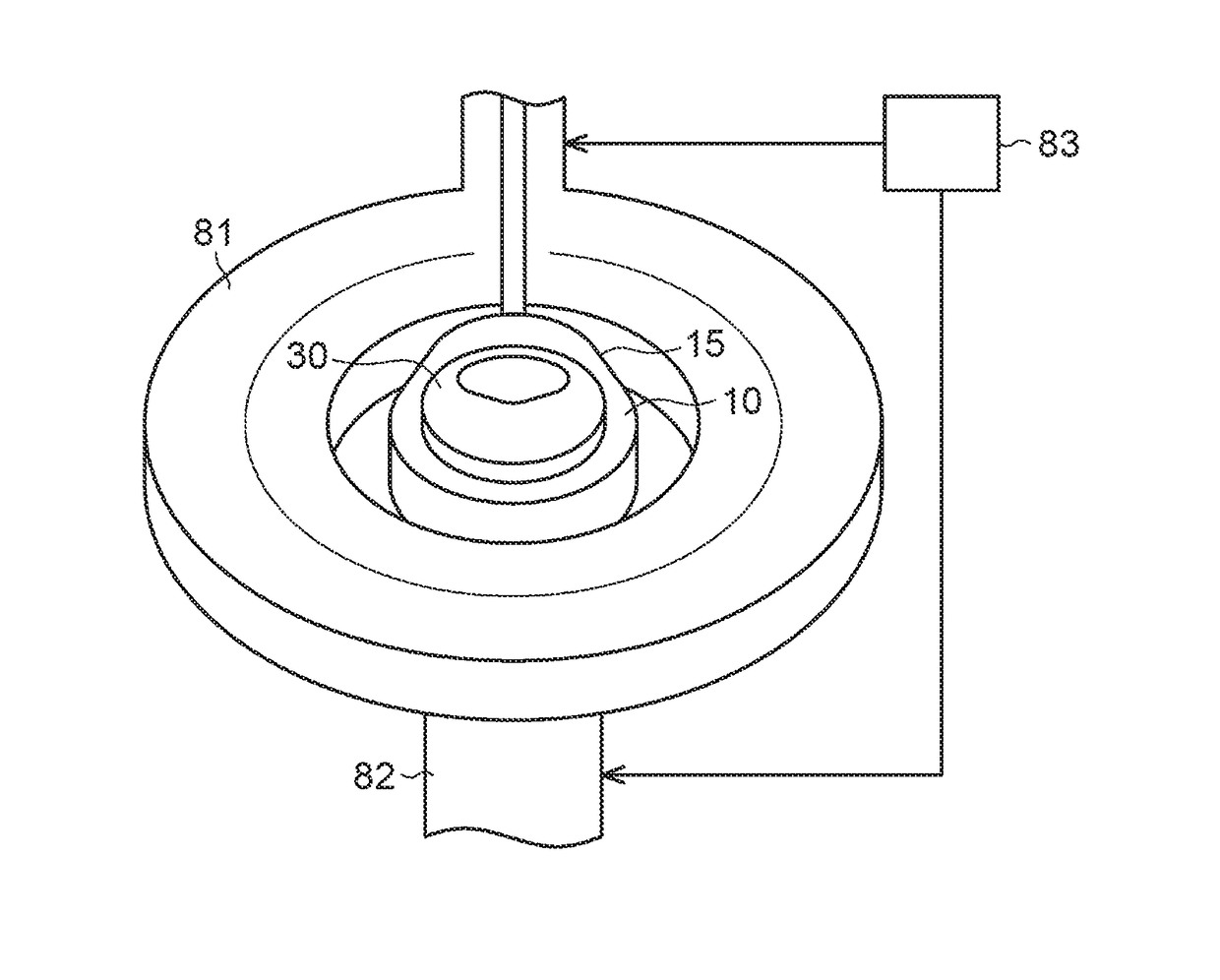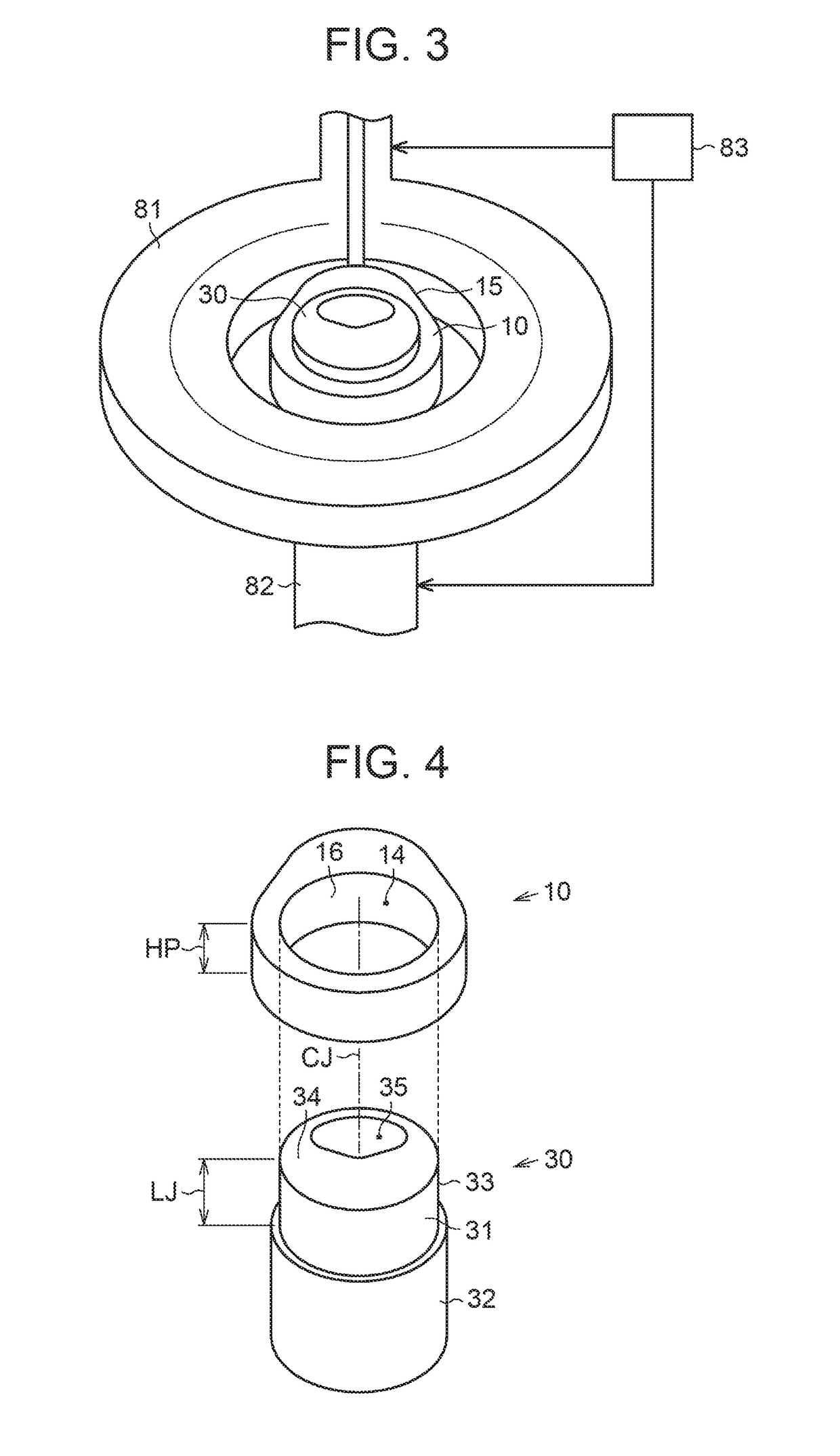Heat treatment method for cam piece
a treatment method and cam piece technology, applied in heat treatment equipment, valve drives, furnaces, etc., can solve the problems of difficult machined inner circumferential surfaces of cam pieces, difficult to machine, and excessive heat of the nose portion, so as to reduce heat transfer from the nose portion, reduce the effect of heat transfer and greater wall thickness
- Summary
- Abstract
- Description
- Claims
- Application Information
AI Technical Summary
Benefits of technology
Problems solved by technology
Method used
Image
Examples
first embodiment
[0030]Hereinafter, a heat treatment method for a cam piece will be described with reference to FIG. 1 to FIG. 6.
[0031]With reference to FIG. 1 and FIG. 2, a cam piece 10 targeted for a heat treatment will be described, hereinafter. As viewed in FIG. 1, each cam piece 10 configures a cam ridge to push and move a driving target in an assembly-type cam shaft 20. Each cam piece 10 is formed by forging steel or the like. The shaft 21 is inserted into the cam pieces 10. In FIG. 1, an axial line CS indicates a central axis of the shaft 21.
[0032]As shown in FIG. 2, the cam piece 10 includes a nose portion 11 configuring a cam ridge, and a base portion 13 configuring a base circle that does not act on motion of the driving target. The cam piece 10 is provided with an insertion hole 14 into which the shaft 21 of the cam shaft 20 is inserted. The insertion hole 14 has a diameter corresponding to a diameter of the shaft 21 so that the cam piece 10 can be shrinkage-fitted to the shaft 21. Subseq...
second embodiment
[0065]Next, operation and effect of the heat treatment method for the cam piece will be described, hereinafter. In heating step S2, the heating is carried out in a state in which the jig 50 having the cutout 57 is inserted in the cam piece 10 in such a manner that the nose portion 11 faces the cutout 57 of the jig 50. Hence, when the heating is carried out, at a part where the inner circumferential surface 16 in the base portion 13 and the outer circumferential surface 53 of the insertion portion 51 in the jig 50 are in contact with each other, heat transfer from the cam piece 10 to the jig 50 occurs. Meanwhile, heat transfer from the cam piece 10 to the jig 50 is unlikely to occur at a part where the inner circumferential surface 16 in the nose portion 11 and the outer circumferential surface 53 of the insertion portion 51 in the jig 50 are out of contact with each other, that is, at a part where the cutout 57 faces the inner circumferential surface 16. Hence, it is possible to su...
PUM
| Property | Measurement | Unit |
|---|---|---|
| central angle | aaaaa | aaaaa |
| “β” | aaaaa | aaaaa |
| thickness | aaaaa | aaaaa |
Abstract
Description
Claims
Application Information
 Login to View More
Login to View More - R&D
- Intellectual Property
- Life Sciences
- Materials
- Tech Scout
- Unparalleled Data Quality
- Higher Quality Content
- 60% Fewer Hallucinations
Browse by: Latest US Patents, China's latest patents, Technical Efficacy Thesaurus, Application Domain, Technology Topic, Popular Technical Reports.
© 2025 PatSnap. All rights reserved.Legal|Privacy policy|Modern Slavery Act Transparency Statement|Sitemap|About US| Contact US: help@patsnap.com



